By Sharon Kebschull Barrett, May 1, 2020
As the COVID-19 crisis sent students and teachers home, we shared the stories of Opportunity Culture® Fellows—educators chosen for their leadership and success helping students make high learning growth—as they were making the shift to at-home teaching. We listened during their interviews for their tips for others focused on helping students learn—and supporting their social-emotional health—no matter what challenges they or their students face, especially if at-home learning continues into the fall or recurs sporadically.
Here are their top tips, gathered under some of the categories of our Instructional Leadership & Excellence framework. Read their full stories for more, and see all at-home resources here.
Leading a Team
Support and Develop Individuals
—Have a distributed leadership structure in place, as Opportunity Culture® provides. The shift to at-home teaching and learning is dramatically eased for Opportunity Culture® schools, with principals supporting and supported by a leadership team of multi-classroom leaders, who in turn support small teaching teams. The built-in structures of support and collaboration shifted from in-person to videoconferences and phone calls, but otherwise stayed largely the same.
—Stay intentional about collaborating even without being in the same building. As conditions and plans change rapidly, collaboration becomes even more crucial. “We all have to stay connected, more now than ever,” Principal Jeremy Baugh said. “The ability to stay connected with each other and share ideas remotely is probably really important going into this next step of the new normal.”
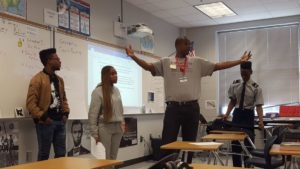
—Maintain team meetings: Multi-classroom leaders (MCLs) should maintain previous schedules of team and individual meetings, continuing to meet at least weekly online as an MCL team for planning and student learning data analysis, and in one-on-one meetings with each team teacher. Principals should maintain meetings of the instructional team of leaders. (See Public Impact®’s schedule examples to help.)
—Maintain good team leadership: Continue to follow the usual Multi-Classroom Leadership routines—coach, co-teach, model, and lead the team in planning and data analysis. For example, after allowing his team to settle in to the new routines, MCL Tu Willingham prepared to observe and coach them while they taught online. He noted that the main work of these early days is shifting strong in-person instruction to strong distance instruction. (See Public Impact®’s summary of how to maintain the instructional excellence elements that top Opportunity Culture® educators demonstrate.)
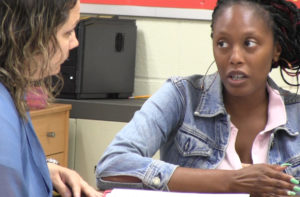
—Take care of yourself: When Candace Butler, who leads a middle school team of English language arts and social studies teachers, talks to the teachers she supports, she says, “‘I care that, one, you’re taking care of yourself because you cannot be productive if you’re not doing self-care… just keep taking care of yourself, because if you break down, then that’s where it’s all going to break down.’ So we have had a couple of “Ahh!” and some, like, scream, cry, let’s get it out, c’mon, we’ll do it together; it’s necessary, you know—it cleanses the soul, and then let’s get back on the horse and let’s ride it, because we’ve got to do it for the students.”
—Encourage teachers to fill in for one another. The stresses on teachers who are caring for their own children or other family members at home were high on Principal Kristen Boyd’s mind. Those stresses will affect principals and MCLs as well; encouraging teachers on the same teams to alternate or provide backup for videoconference teaching sessions may make an at-home teaching schedule more doable for everyone. Additionally, everyone should have a plan for backup in case an educator gets sick.
Achieving Instructional Excellence
—Keep aiming for high-standards, high-growth instruction. “Don’t think about any barriers right now,” Baugh said. “Just pretend that every single kid is online, they’re going to show up to your class when they’re supposed to show up—what exactly would that look like?” That exercise, he said, opened his team up to create a better environment for learning.
—Give extra grace: MCLs and principals see the stress on their teaching teams, and everyone sees the stress on their students. Teachers want to keep up their high-standards instruction, but over and over, interviewees emphasized the need to be understanding and cut everyone extra slack as they deal with fear and frustration.
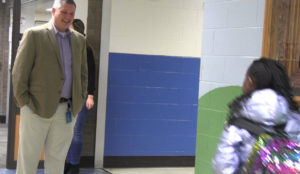
—Stay focused on relationships with students and teachers—by far the top recommendation from all Opportunity Culture® educators interviewed. That includes paying attention to teachers’ and students’ mental health needs, and to keeping teachers and students connected even while they are forced to stay apart. “The biggest thing long-term for me is relationship-building,” Butler said. “I’ve said it from the beginning and I’ll say it til the end—we have to keep building the relationship…not only with the students, but also with the parents and the community because we need everybody’s support in order to make sure that our students are getting exactly what they need.”
—Consider looping teachers, to maintain student-teacher relationships, if school closures continue into the fall. Teachers may need to learn new content to move up a grade with their students, Baugh said, “but we’ve got MCLs to help with that, so we can overcome those barriers.” He leads an elementary school; even in secondary schools, keeping some consistency can help.
Execute Rigor and Personalization
—Continue the focus on strong instruction and curricula. It can feel especially hard to maintain rigor under these circumstances, but after the initial transition, schools will need to help their students keep moving forward. “There’s no reason in today’s world with the technology resources that we have that we can’t provide the same high-quality instruction, maybe even a little bit better, to be honest, because we can take away the barriers of certain grade levels, dropping kids into different groups, and having teachers do things that are a little outside of their normal scope of work,” Baugh said.
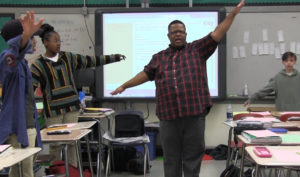
—Keep tech tools focused. This also began to feel like a mantra from the Opportunity Culture® educators we profiled: Don’t overload teachers or students with a variety of remote-learning resources. Although that limits teachers’ autonomy, it helps students who otherwise may now have five platforms to navigate, Willingham said—“like an octopus on roller skates.” Instead, use the full capabilities of the few platforms used.
—Survey students to understand their needs, instructionally and emotionally: Expanded-Impact Teacher Jimmel Williams listened to his students’ request for a simplified Canvas platform for their assignments, presented with expandable menus that keep the workload from appearing overwhelming. His survey also showed him that “they really miss their peers; they miss being able to just laugh and cut up. They’re also very concerned and very anxious.”
—Guide students in becoming more self-directed, and work to meet each student’s needs, which may look different when they’re learning at home. “Teachers have to slow down and realize that just because you’re putting this up on Google Classroom or on Canvas, it doesn’t mean that every student is getting it,” Butler said. Tutor students on technology and time management, as well as subject content.
—On videoconferences, focus on small groups: Williams tried Zoom with larger groups of the 212 students he teaches, but found it chaotic. Small groups work best, for instruction and a time for students to connect with eye contact and smiles—and to have fun while learning.

—Include not only daily but weekly due dates: Weekly deadlines give students some control of and accountability for their study schedules, while daily ones help teachers check for understanding and address gaps quickly. Keep up the grace, though, understanding that students may have disruptions at home. Give students second and third chances to turn in their work, and reach out to help, rather than just marking work as missing. Williams allows his students to keep trying on assignments until they are satisfied with their mastery.
—Provide multiple opportunities for students to join live classes online. MCL Casey Jackson noted the varying times her students were able to get online. Students may be caring for younger siblings or sharing devices or Wi-Fi and thus not be able to get online for one specific time every day; providing several chances to join live instruction will help students show up. As districts fill in devices and broadband for 1:1 use, still consider offering small-group time slots in each “class period” for flexibility.
Monitor Learning & Adjust Instruction
—Monitor data & adjust. In the early days of the transition to at-home learning, MCL Christina Ross said, teachers needed her to focus on providing instructional support and resources. But after the initial transition, teaching teams should refocus on student data analysis, she said, and how to close the gaps the data highlight. Former MCL (now assistant principal) Erin Burns Mehigan agreed, continuing with regular team meetings through videoconference that maintain their focus on data-driven instruction.
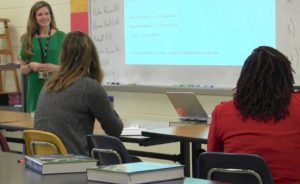
—Communicate, in as many ways as possible, but with one consistent message: Use multiple ways to communicate with parents—email, phone messages, and learning platform messaging—to be sure at least one way reaches them, but consider being even more directive with teaching teams than usual about what goes out. “There’s just so much room for interpretation that we are having to be more explicit than normal, almost like, ‘here is a sample email, copy and paste and insert your name here,’” Mehigan said. “This is so new for everybody, and everyone’s interpretation of what is going on is a little bit different, that it’s just been a big challenge trying to have one message out of the school. … Make sure it’s all uniform.”
—Turn vulnerabilities into strengths to keep improving. “We are in a constant state of problem and solution to improve our weaknesses so they can become our strengths,” Ross said. “Change is amazing, and this is the fastest change you will ever see in education. … Any weakness that you have in your district or in your teaching is going to make you feel the most vulnerable you have ever felt. That vulnerability is going to make you and your district grow faster than ever, to meet the needs of your students and community.”
Note: Public Impact® and Opportunity Culture® are registered trademarks; Multi-Classroom Leader®, MCL™, Multi-Classroom Leadership™, and Expanded-Impact Teacher™ are trademarked terms, registration pending.
